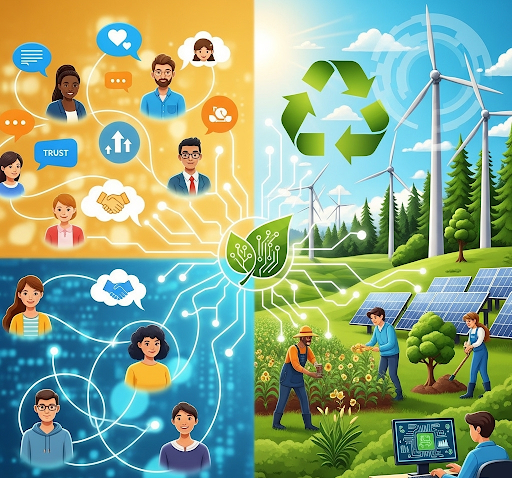How Human Followers Drive Growth in the Green Economy?
For many individuals and brands, the goal of social media is to attract authentic engagement and build a community with real human followers. This pursuit is rooted in the understanding that a large but unengaged audience holds little value. Building a following with genuine human followers requires a strategy focused on creating meaningful content, fostering two-way conversations, and establishing trust.
This method of growth, prioritizing quality over mere quantity, is not a quick fix but rather a long-term investment in a valuable, engaged community. This strategic approach to building a digital presence can be compared to the principles of another growing and important sector.
Foundation of Green Economy and Sustainable Growth
Just as a thriving digital community is built on genuine interactions, a successful green economy is built on principles of sustainability and long-term vision. A green economy is defined as one that is low-carbon, resource-efficient, and socially inclusive. Improving wellness and social equity is the primary goal. Of course, it involves the reduction of environmental risks as well as ecological scarcities.
It represents a paradigm shift from traditional economic models that prioritize profit at the expense of the environment and societal well-being.
This model promotes a new approach to development where economic growth and environmental protection are not mutually exclusive but are instead complementary.
Key Pillars of a Sustainable Economy
A core component of the green economy is the focus on resource efficiency and a circular model. This involves minimizing waste, reusing materials, and recycling products to keep them in use for as long as possible.
Instead of a linear “take, make, dispose” model, businesses and industries are encouraged to adopt regenerative practices that restore and enhance natural capital. This includes everything from using eco-friendly packaging to implementing lean manufacturing processes that reduce waste in production.
Transitioning to Renewable Energy

A major driver of the green economy is the shift away from fossil fuels and towards renewable energy sources. This transition is essential for reducing carbon emissions and mitigating the effects of climate change. Investments in renewable energy infrastructure, such as solar, wind, and geothermal power, create new jobs and stimulate economic activity.
The development of green technologies, like electric vehicles and energy-efficient appliances, further supports this transition and offers new opportunities for innovation and growth.
Green Investments and their Impact
Investing in green technologies and sustainable businesses is a key aspect of fostering a green economy. Financial institutions and governments are increasingly offering green bonds, sustainable investment funds, and incentives for businesses that adopt eco-friendly practices.
These investments not only contribute to environmental protection but also offer long-term financial returns as the demand for sustainable products and services continues to grow.
Fostering Social Inclusion and Job Creation
A truly green economy is also socially inclusive. It emphasizes the creation of “green jobs” that are both environmentally friendly and socially equitable. This includes jobs in renewable energy installation, sustainable agriculture, and eco-tourism. The green transition aims to provide opportunities for all, including marginalized communities, ensuring that the benefits of sustainable growth are shared widely.
Policies are designed to ensure a “just transition,” supporting workers and communities that may be affected by the phasing out of carbon-intensive industries. This focus on people, planet, and prosperity ensures that growth is not only sustainable but also fair.
